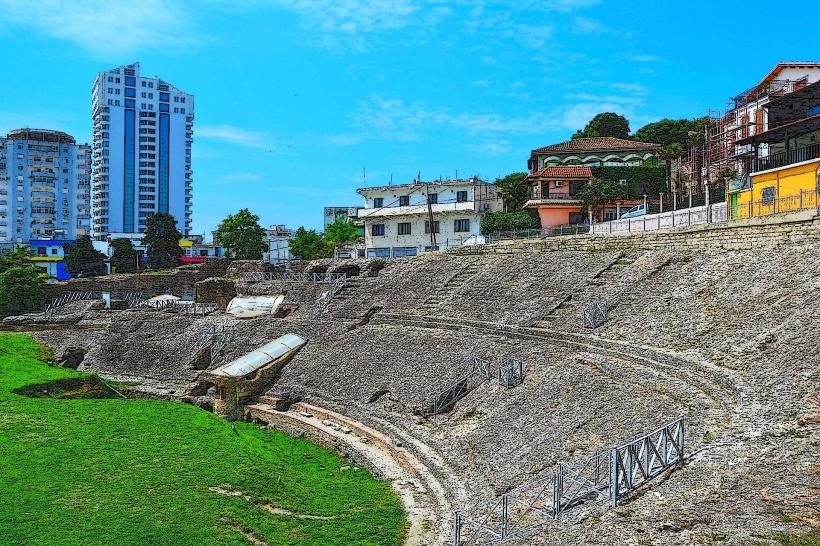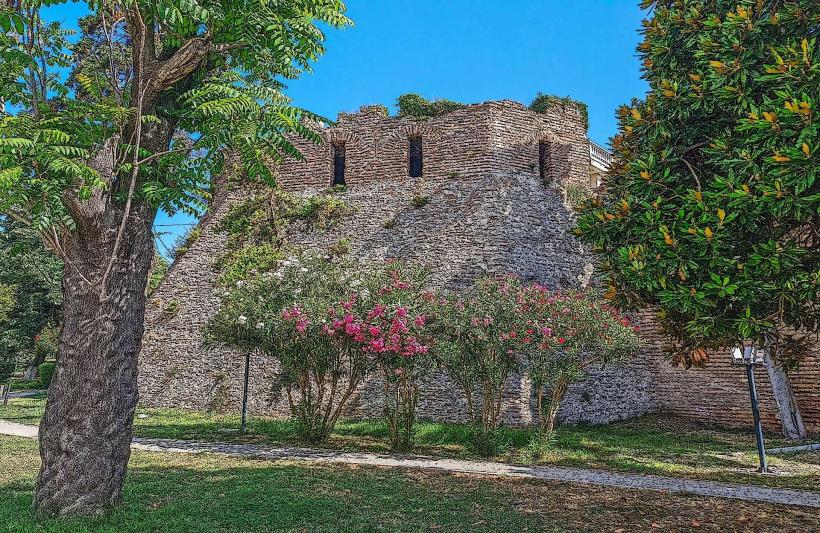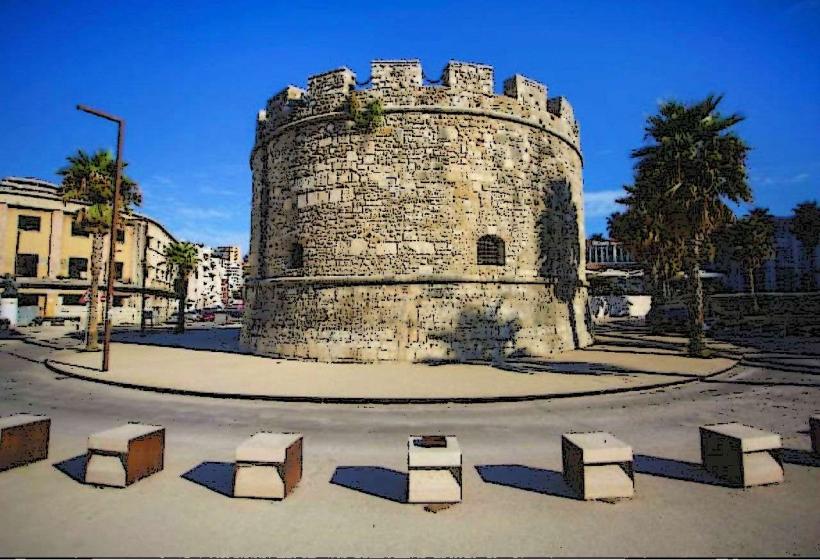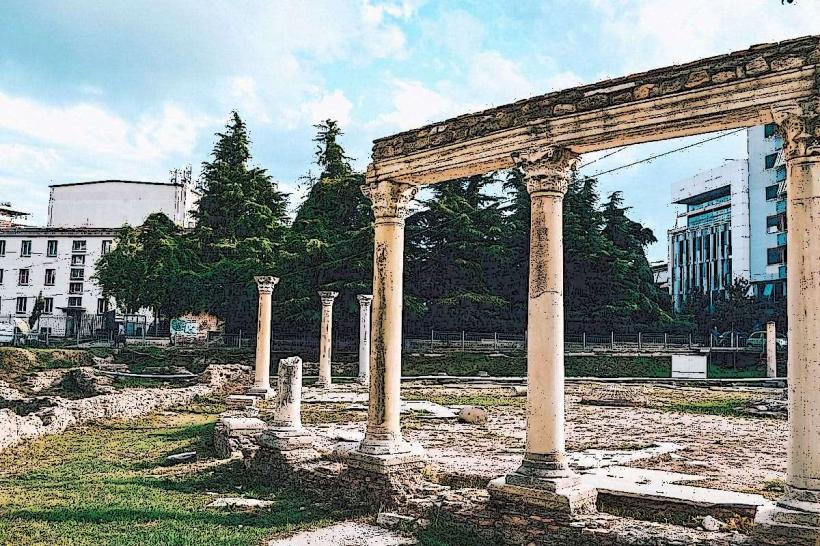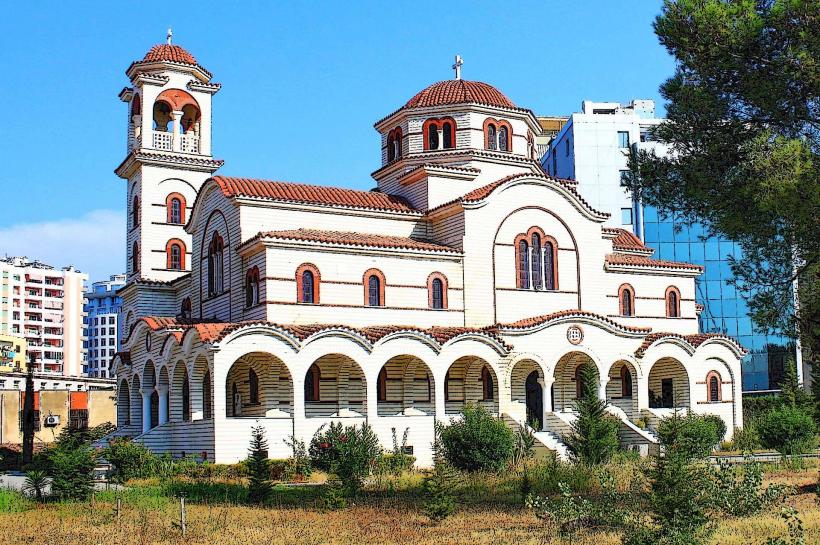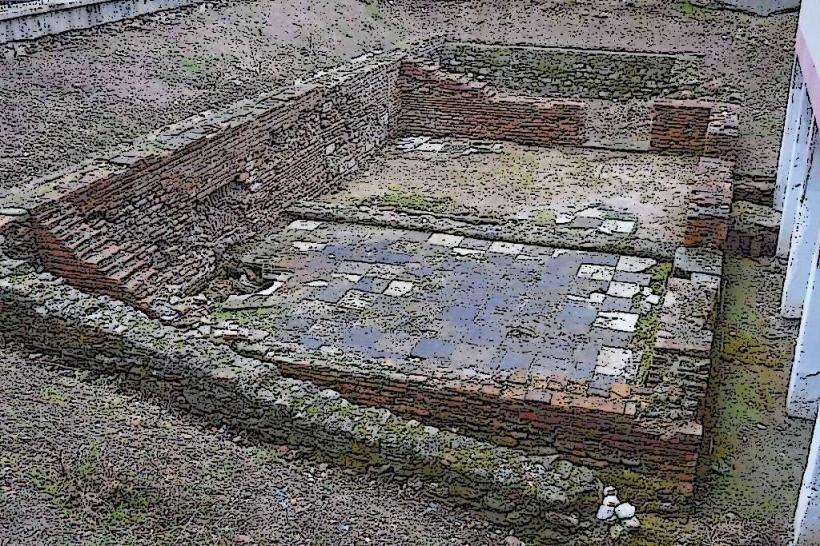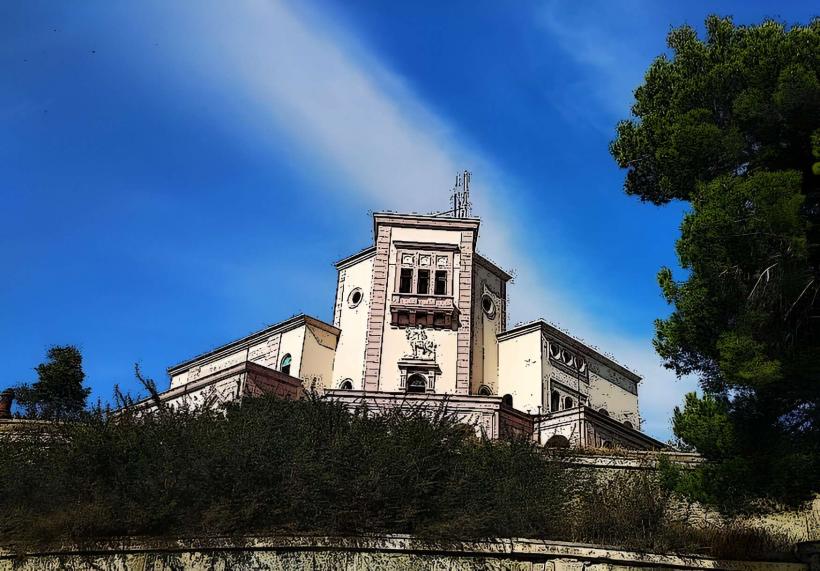Information
Landmark: Great Mosque of DurresCity: Durres
Country: Albania
Continent: Europe
The Great Mosque of Durrës (Xhamia e Madhe e Durrësit) is one of the most significant Islamic monuments in the city of Durrës, Albania. It holds historical and architectural importance, particularly as a representation of the Ottoman influence on the region. The mosque is an enduring symbol of the city’s long history, reflecting both its cultural and religious heritage.
1. Overview
- Location: The Great Mosque is situated in the city center of Durrës, close to the Durrës Port and other historical landmarks such as the Venetian Tower and Durrës Archaeological Museum.
- Significance: The mosque is one of the largest and oldest Islamic religious structures in the region, serving as a key point for the local Muslim community, both historically and today.
2. Historical Background
The Great Mosque of Durrës was constructed during the Ottoman period, specifically in the early 18th century, and it represents the Ottoman architectural style that influenced many religious structures across the Balkans.
2.1 Ottoman Influence
- The Ottoman Empire ruled over Albania for several centuries, from the late 14th century until the early 20th century. During this period, Islam became the dominant religion in many parts of the region, leading to the construction of numerous mosques, medressas, and imposing religious structures in cities like Durrës.
- The Great Mosque of Durrës was one of the largest mosques built during this time, showcasing the typical Ottoman style with its minaret, domed structure, and open courtyard.
2.2 Construction
- The mosque was originally built in 1502 during the early years of Ottoman rule in Durrës by the Ottoman Sultan Bayezid II. However, the building was significantly renovated and expanded in the 18th century, which is when it became known as the Great Mosque.
- The mosque’s construction is attributed to the architectural traditions of the Ottoman Empire, which combined Islamic, Byzantine, and local architectural influences. The result is a harmonious and functional religious building that reflects both spiritual and cultural heritage.
3. Architectural Features
The Great Mosque of Durrës is a quintessential example of Ottoman mosque architecture. The mosque's design emphasizes simplicity, functionality, and beauty, reflecting the architectural principles of the Ottoman Empire.
3.1 Layout and Design
- Prayer Hall: The mosque has a large, central prayer hall (musalla), which is rectangular in shape. The high ceiling is supported by pillars, and the hall can accommodate a significant number of worshippers during prayers.
- Minaret: Like many Ottoman mosques, the Great Mosque has a minaret, which serves both as a symbol of Islamic presence and a place from which the call to prayer (adhan) is issued. The minaret is tall and slender, built of brick and stone.
- Courtyard: The mosque includes a courtyard (sahn), which is common in Ottoman mosques. The courtyard serves as a transition area between the exterior and interior of the mosque. It is often shaded and offers a peaceful place for visitors and worshippers alike.
- Prayer Niche (Mihrab): The mosque features a mihrab, a niche in the qibla wall (the wall that faces Mecca), marking the direction of prayer.
3.2 Decorative Elements
- Calligraphy and Arabic Inscriptions: As with many Ottoman mosques, the interior walls of the Great Mosque are decorated with beautiful calligraphy and Arabic inscriptions, including verses from the Qur'an. These inscriptions are important not only for their spiritual significance but also for their artistic value.
- Woodwork and Stonework: The woodwork in the mosque is intricately crafted, and the stone carvings are representative of the Ottoman aesthetic. The mosque features ornate doors, windows, and columns, all executed with care to reflect the grandeur and spiritual atmosphere of the mosque.
4. Role and Importance
The Great Mosque of Durrës continues to serve as an active place of worship and a spiritual center for the local Muslim population. Its historical, cultural, and religious significance make it an important landmark in the city.
4.1 Religious Role
- The mosque serves as a key site for Islamic prayers, particularly the five daily prayers (Salat), and special religious observances such as Friday prayers (Jumu'ah), Ramadan prayers, and other important Islamic festivals.
- It also serves as a place for community gatherings, religious education, and the maintenance of Islamic traditions in the region.
4.2 Cultural Significance
- The Great Mosque is an emblem of the Ottoman heritage in Durrës and a reminder of the region's multicultural and multi-religious history.
- While the mosque is primarily a place of worship, it is also a cultural landmark that attracts visitors interested in the architectural beauty and historical depth of the city.
- The mosque represents the fusion of Ottoman and local traditions, both in its design and its role in the community.
5. Visitor Experience
The Great Mosque of Durrës is accessible to both worshippers and tourists, though visitors are advised to respect the mosque's religious functions and customs.
5.1 Visiting Tips
- Dress Modestly: As the mosque is a place of active worship, visitors are expected to dress modestly when entering. Women should cover their heads, and both men and women should wear respectful clothing.
- Respect for Prayer Times: Visitors should avoid entering the mosque during prayer times, especially during Friday prayers or Ramadan, unless they are attending the service.
- Photography: Photography is usually allowed in the mosque, but it’s important to ask for permission beforehand, particularly in more private or sacred areas.
5.2 Tour of the Mosque
- The mosque can be visited by walking from the city center, and it is easy to combine a visit with a trip to other nearby landmarks such as the Durrës Archaeological Museum, the Durrës Amphitheater, and the Venetian Tower.
- While the mosque is still an active place of worship, it is also open for educational purposes and cultural tourism. Local guides can provide visitors with historical context and explain the architectural features and significance of the mosque.
6. Practical Information
How to Get There
- The Great Mosque is located near the city center of Durrës, so it can be easily reached by foot, taxi, or public transport from the city's main attractions.
Visiting Hours
- As the mosque is primarily a place of worship, visiting hours are usually flexible outside of prayer times. It is best to check with local sources for specific visiting hours.
Entry Fee
- There is generally no entry fee for visitors, though donations to support the mosque's upkeep may be welcomed.
7. Why Visit the Great Mosque of Durrës?
- Architectural Beauty: The mosque is a prime example of Ottoman religious architecture and offers insight into the design elements and building techniques used during the period.
- Historical Significance: As one of the oldest and largest mosques in Albania, it offers a window into the Ottoman era and the influence of Islam on the region.
- Cultural Understanding: A visit to the Great Mosque provides an opportunity to understand the Islamic heritage of Albania and the role of religion in shaping the cultural landscape of Durrës.
8. Conclusion
The Great Mosque of Durrës is a prominent and historically significant landmark that reflects the cultural and religious diversity of the city. Whether you are interested in Ottoman architecture, Islamic history, or simply want to explore a key part of Durrës' heritage, the mosque offers a rich and meaningful experience. Its combination of religious and architectural significance makes it one of Durrës' most important sites to visit.

